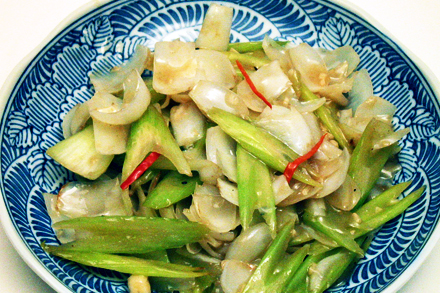Lilies are beautiful, fragrant flowers that make a stunning addition to any garden. Many people don’t realize that you can actually eat lilies! The petals of most varieties are edible and make a lovely garnish for salads or desserts.
The bulbs of some species, such as the Easter lily, are also edible. However, it’s important to be aware that not all lilies are safe to eat. Some contain poisonous compounds that can make you very ill if ingested.
- Select a lily that is fresh and has not been damaged
- Cut the stem of the lily at an angle so that it can easily be inserted into a vase of water
- Place the lily in a vase of clean water and allow it to drink for several hours
- Cut the stem of the lily again, this time at a 45 degree angle, just before you are ready to eat it
- Gently peel back the petals of the lily and remove the stamen from the center of the flower
- This is where most of the pollen is located and can cause allergies in some people
- Enjoy your lily!
The Truth About Water Lily Root As Survival Food
Can You Eat Daylilies Raw
Sure, you can eat daylilies raw! In fact, they’re a pretty popular edible flower. The entire plant is edible, from the roots to the petals.
Daylilies have a slightly sweet taste and a crunchy texture. They make a great addition to salads or can be eaten on their own as a snack.
If you’re looking to add some daylilies to your diet, you’ll want to make sure they are clean and free of any pesticides.
Rinse them thoroughly before eating. You can also cook daylilies, which will soften their texture and bring out their sweetness even more. Try sautéing them in a bit of butter or oil, or adding them to soups or stir-fries.
No matter how you enjoy them, daylilies are a delicious and nutritious way to add some extra color and flavor to your meals!
Can You Eat Lily Pads
Lily pads are often found in ponds and other water bodies. While their primary function is to provide a place for aquatic animals to rest, they can also be eaten. Lily pads are a good source of vitamins A and C, as well as potassium and magnesium.
They can be eaten raw, cooked, or pickled. When cooking lily pads, it is important to remove the central vein, as it can be quite bitter. Lily pads can be used in salads, soups, stews, or stir-fries.
Can You Eat Tiger Lilies
Are you looking for a new and interesting flower to add to your diet? If so, you may be wondering if tiger lilies are edible. The answer is yes!
Tiger lilies (Lilium columbianum) are not only edible, but they are also a good source of vitamins and minerals.
Tiger lilies have a long history of being used as food. In Asia, they were often pickled or stir-fried.
Today, they are sometimes used in salads or as a garnish.
While tiger lilies are safe to eat, there are a few things to keep in mind. First, make sure that the flowers you’re eating have not been sprayed with pesticides.
Second, the pollen from tiger lilies can cause an allergic reaction in some people. If you’re allergic to pollen, it’s best to avoid eating tiger lilies.
If you’re looking for a new and nutritious way to add some variety to your diet, give tiger lilies a try!
Lily Bulbs
If you want to add some beautiful lilies to your garden, planting lily bulbs is a great way to do it. Lily bulbs are relatively easy to grow and care for, and they will reward you with years of blooms. Here are some tips on how to plant and care for your lily bulbs:
When to Plant: The best time to plant lily bulbs is in the fall, before the first frost. This gives the bulbs a chance to establish themselves before winter sets in.
Where to Plant: Lilies prefer a sunny spot with well-drained soil.
If your soil is heavy or clay-like, amend it with some sand or compost before planting.
How to Plant: Dig a hole that is twice as deep as the height of the bulb. Place the bulb in the hole, pointy side up, and cover with soil.
Water well after planting.
Care: Once your lilies are planted, they will need regular watering during their growing season (spring and summer). They also benefit from an annual application of fertilizer in early spring.
Be sure to deadhead spent flowers throughout the season so that new buds can form.

Credit: redcook.net
What Happens If You Eat Lily?
If you eat a lily, the chances are that not much will happen. Lily plants contain small amounts of toxins that may cause gastrointestinal upset if ingested in large quantities, but these effects are typically mild and not harmful. However, it is important to be aware that some lilies (such as the Daylily) can cause allergic reactions in some people, so it is always best to consult with a medical professional before consuming any plant material.
Are Lilies Poisonous If Eaten?
No, lilies are not poisonous if eaten. While the pollen of some lily species can cause an allergic reaction in some people, eating the flower or plant is not harmful.
Which Lilies are Not Edible?
There are many different types of lilies, and not all of them are edible. Some common varieties of inedible lilies include the tiger lily, daylily, Asiatic lily, and Easter lily. These plants contain poisonous compounds that can make you sick if you eat them.
Symptoms of Lily Poisoning include stomach pain, vomiting, diarrhea, and dizziness. If you suspect that you or someone else has eaten an inedible lily, seek medical attention immediately.
Are Lilies Poisonous to Cats if Ingested?
Cats and lilies compatibility can be a concern as certain lilies are toxic to cats if ingested. Consuming any part of the lily, especially the flower or leaves, can result in severe symptoms like vomiting, loss of appetite, and kidney failure. Therefore, it is essential for cat owners to keep lilies out of their feline friends’ reach to ensure their safety and wellbeing.
What Kind of Lily is Edible?
There are many different types of lilies, but not all of them are edible. The most common type of edible lily is the tiger lily. Tiger lilies have large, showy flowers and can be found in a variety of colors including orange, yellow, and red.
These flowers are often used in salads or as a garnish for other dishes. Other types of edible lilies include daylilies and waterlilies. Daylilies have small, delicate flowers that are usually orange or yellow in color.
They can be eaten raw or cooked and are often used in Asian cuisine. Waterlilies have large leaves and beautiful flowers that float on the surface of ponds or lakes. The bulbs of waterlilies are also edible and are sometimes used in soups or stir-fries.
Is “Are You Blind Lilli Nielsen” a Book or a Movie?
Are You Blind Lilli Nielsen is a book that explores the unique perspective of blindness and lilli nielsen’s innovative approach towards understanding visual impairment. This powerful narrative sheds light on the challenges faced by individuals with blindness and showcases Nielsen’s groundbreaking methods to foster independence and cognitive development. The book delves into the impact of her work and her profound influence on the field of visual impairment.
Conclusion
If you have lilies in your garden, you may be wondering if you can eat them. The answer is yes! All parts of the plant are edible, from the roots to the flowers.
The leaves can be cooked and eaten like spinach, and the petals make a beautiful addition to salads. You can even use the stamens to make a sweet syrup. So next time you’re looking for something different to add to your meal, reach for a lily!






